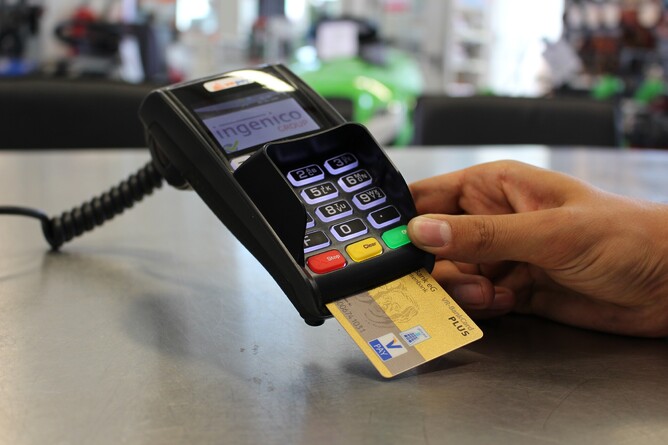The life blood of any business
Many of you will have heard the saying ‘turnover is vanity and profit is sanity’.
It’s a mantra that we would certainly encourage any small business to adopt but it is a sad fact that many find themselves in financial difficulty despite making a profit.
There is another saying that we are a little more fond of: cash is king. As small business accountants, we would encourage this to always be the main focus of any owner managed business.
For any small business, cash flow is one of the most challenging aspects to manage. Maintaining a steady, healthy flow of money into your business that is both reliable and largely predictable is difficult, particularly given the mountain of other tasks you have to deal with.
The main measure of insolvency is whether or not a business can pay its debts as they fall due. The harsh reality is that profitable small businesses become insolvent, even with a positive balance sheet.
Cash is quite simply the life blood of any business, but too many leave it to chance.
So here are some top tips from us as small business accountants to help you improve your cash flow.
Reduce your payment terms
Far too many businesses offer 30 day terms on everything they sell.
We don’t know why but somehow 30 days has become the default that many assume is simply ‘the norm’ and is therefore what customers expect. It’s not.
Nowhere is it written that you must offer 30 days. If you look at the research, then on average a small business that is offering 30 day net terms will be paid on around day 44.
That's a 6 week, non secured, interest free loan for every customer.
As a small business never offer 30 days as a standard term and if you are currently doing this - change immediately. Start by requesting payment up front, even if you can’t secure 100% of what you are invoicing, anything is worth getting your hands on.
Thereafter we suggest that you offer 7 day terms which should mean as a business you are getting paid on about day 21.
This not only increases the chance of improving your cash flow it also significantly reduces your potential bad debt exposure.
Of course, some customers will simply not accept 7 day terms; but at least you are starting low and being negotiated up. Also, never be frightened to contact existing bad payers and say they need to move to 7 days as if nothing else, you can start a dialogue about their payment behaviour.
Use software
There is now a plethora of cloud based platforms on the market that are specifically aimed at improving small business cash flow.
This includes specific credit control software that automatically chases your customers to prompt for payment (and will even automatically send a ‘thank you’ when they do!).
This frees up your time to concentrate on your larger or more difficult customers rather than spending time raising statements or contacting customers that were planning on paying without needing to be pushed.
Many cloud accounting packages also include basic invoice chasing functionality as standard - if you are using a cloud platform for your accounting then make sure this aspect is switched on.
Also ensure that you have any automated chasers to start contacting your customers BEFORE an invoice becomes due. A gentle reminder that payment is coming up is far more effective than leaving it a week after the payment date to start talking about settlement.
Invoice now
Following on from the above point re software, there really isn't any excuse for small businesses to only be invoicing at the end of a month in the age of cloud software.
Even if your customers are planning on paying you on time, if you don't bother to get your invoice to them for a couple of weeks, you have instantly gifted them an additional 14 days' credit.
One of our greatest frustrations as small business accountants is when we are helping clients with cash flow issues and seeing situations where work has been completed but not yet invoiced.
Software can allow you to instantly turn quote into invoices and to automate regular invoices for things such as rent, maintenance or support.
Make it as easy as possible for customers to pay
This may seem like an obvious one, but too many small businesses actually make this aspect quite difficult. Accepting payments by bank transfer, cash and cheque isn't sufficient.
It is now extremely easy and cost effective for small businesses to accept credit and debit cards and other forms of electronic payment.
In addition, if you are dealing with cash paying customers, contactless payment terminals are also extremely quick and easy to adopt and you don't need to worry about things like trade accounts anymore (even if your bank is insisting on one).
The key is to ensure that once a customer has decided to pay, you make getting paid as convenient as possible.
There is a consideration about additional fees, but these need to be considered in light of reduced bad debt risk and, crucially, getting paid faster.
Stick to your terms
When a customer has placed an order with you they have made an agreement to pay you according to your terms.
In the small business community it is often seen as acceptable that people don’t pay when they have agreed. It is simply not.
You have upheld your part of the agreement by supplying what was asked, and now it is completely reasonable to expect your customer to pay you what you have asked, when you have asked for it.
This is not a matter of you enforcing your terms. It is a matter of your customer paying you when they agreed to. It is a completely reasonable ask but often requires a change in thinking and approach.
In short - stop apologising for asking your customer to pay you what they agreed, when they agreed.
Also ensure that you charge interest on any overdue amount. The amount you can earn is negligible and irrelevant, but it can be a great 'win' for your customer if you waive the interest charge if they now agree to pay immediately.
Understand the impact
Your cash flow model is easily as important as your business model and with all businesses it is intrinsically linked.
If you agree to deviate from your cash flow model as part of a negotiation then make sure you understand the impact. A cash flow model or forecast doesn't have to be complex, in fact, the more simple it is, the easier it is to manage.
Trends are important. Cash flow issues are rarely acute, they usually build over time as little things slowly shift.
Talk to us
If you would like clear, concise and easy to understand help and advice on any issues that you are concerned about then you can contact us on 01474 326224. Alternatively, visit the website tweet @atnpartnership or email info@atnpartnership.co.uk.






